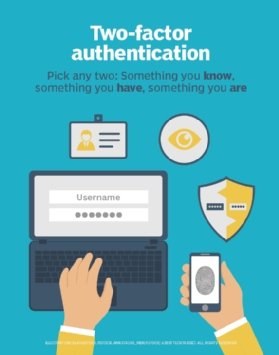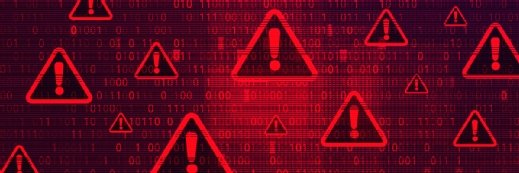
Gorodenkoff - stock.adobe.com
8 ways to enhance data center physical security
Data center physical security is just as important as cybersecurity. Organizations can follow these eight security approaches to enhance facility access monitoring.
Cybersecurity is a top concern when it comes to data protection, but physical security is just as important. As cloud grows and AI enters mainstream business use, data center infrastructure will only expand, leading to unexpected physical vulnerabilities.
Advancements in physical security are necessary as data center architecture and infrastructure become increasingly complex. This article examines eight ways organizations and administrators can improve data center physical security for existing and planned facilities.
1. Site selection
Physical security considerations start in the planning phase, specifically with site selection. Data centers should be away from areas at risk of natural disasters. Although natural disasters often cannot be avoided, it is best to stay away from flood zones, fault lines and wildfire-prone regions.
Use the location's landscape to enhance security. Foliage, for example, can obscure building details. Implement tall fences, crashproof barriers and gated entries to control the perimeter. Natural and human-made barriers should reduce vehicular threats.
2. Controlled entry points
Use cameras and guards to observe and verify all entries and exits. High-resolution and night vision-capable CCTV ensures day and night surveillance. Confirm coverage of all access points and critical areas -- open surrounding land can improve visual security. Admins must enforce policies for retaining footage for future analysis and review.
Alarm systems should include motion detection, door operations and glass-break sensors to alert security personnel of any intrusions. Every entry point should also require identity verification.

3. Multilayer access controls
Access controls and identity management methods enable security personnel to determine whether someone is authorized to enter the facility. Physical methods include electronic badges. Biometrics and PINs act as multifactor authentication.
Think of this security as a zero-trust model applied to people rather than network access. Trust requires strict identity verification and authorization. Physical zones within the data center may have low and high security labels, with distinct access controls governing each.
Be vigilant of tailgating and passback access methods. Tailgating involves one person following another through a secure entry without authenticating. Passback occurs when one person passes their authorization card to another person, effectively using the same credentials twice for two different individuals.
4. Visitor management protocols
Data centers require the presence of security personnel around the clock to ensure the safety and integrity of their operations. These personnel enforce essential visitor management protocols, which begin with thorough identity verification to confirm the legitimacy of all individuals entering the premises.
Security personnel maintain meticulous records by ensuring that visitors, including delivery drivers, sign in and out of the facility. They also plan necessary guides for visitors and ensure that all access is approved in advance. To enhance protocols, security personnel issue body screening, biometrics equipment and temporary badges to visitors, clearly marking their status and enforcing time restrictions for their presence.
5. Staff training and awareness
Establish awareness, vigilance and accountability in the organization's culture. Begin with security awareness training -- don't forget retraining when security policies are updated. Ensure all personnel understand emergency protocols and response procedures.
Employees must recognize and avoid social engineering attacks, such as phishing, scareware and tailgating. This vulnerability is one of the most serious. It usually has a sense of urgency or credibility behind it to psychologically manipulate authorized personnel into giving out sensitive security information.
6. Environmental monitoring
Monitoring environmental factors provides crucial information about air flow, temperature, humidity and water. These elements directly affect the performance and reliability of data center equipment.
For example, monitoring for heat fluctuations enables data center teams to identify and correct problems, reducing equipment failure and downtime. In turn, this management improves customer trust and regulatory compliance.
Monitoring for hazards, such as fire risk, is also crucial. Early smoke detection protects employees and equipment. Dry pipe sprinkler systems fill pipes with pressurized air, and they do not release water until the sprinkler head detects a fire. This approach minimizes accidental water leaks and provides effective fire suppression.
7. Cabinet and rack security
Hardware security goes hand in hand with data protection. Rackmounted server cabinets should be accessible only to authorized personnel. Lock server cabinets to prevent theft of storage disks or the use of data copying devices. Also, ensure that failover servers are in separate racks.
Secure administrative workstations and rackmounted configuration terminals, as these are potential entry points for malicious or unauthorized access. Protect network cable using conduit and encrypted network protocols, such as Secure Shell.
8. Regular auditing, testing and maintenance
Establishing procedures, training employees and developing visitor protocols mitigate physical threats to a data center. However, periodic audits and testing are still essential. A data center's physical attributes change over time, and data management technologies evolve. Regular confirmation of the effectiveness and applicability of processes is necessary for efficient operation.
Damon Garn owns Cogspinner Coaction and provides freelance IT writing and editing services. He has written multiple CompTIA study guides, including the Linux+, Cloud Essentials+ and Server+ guides, and contributes extensively to Informa TechTarget Editorial, The New Stack and CompTIA Blogs.








